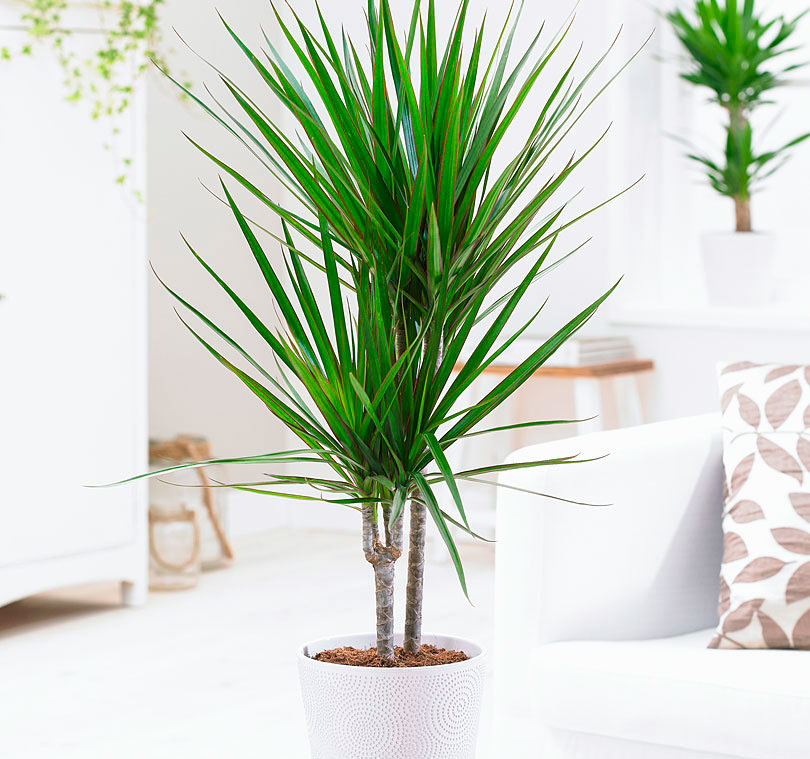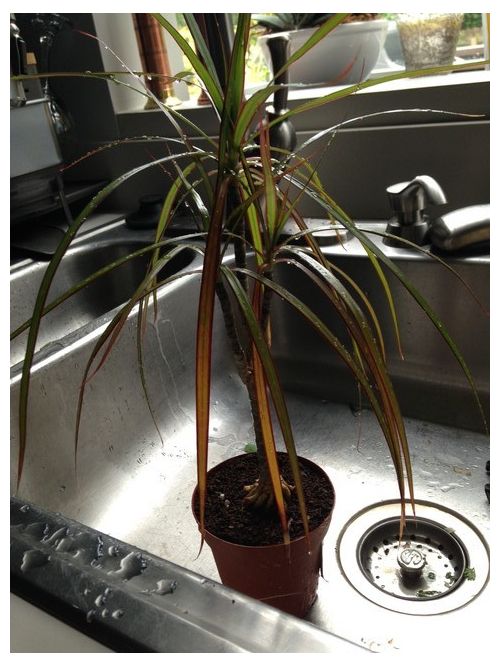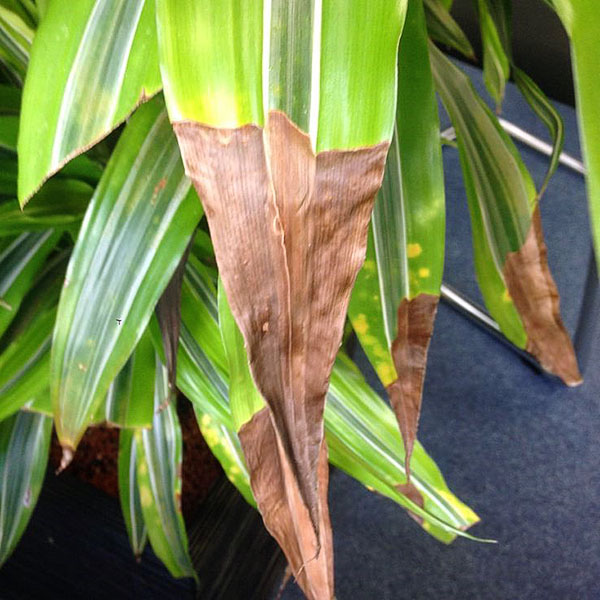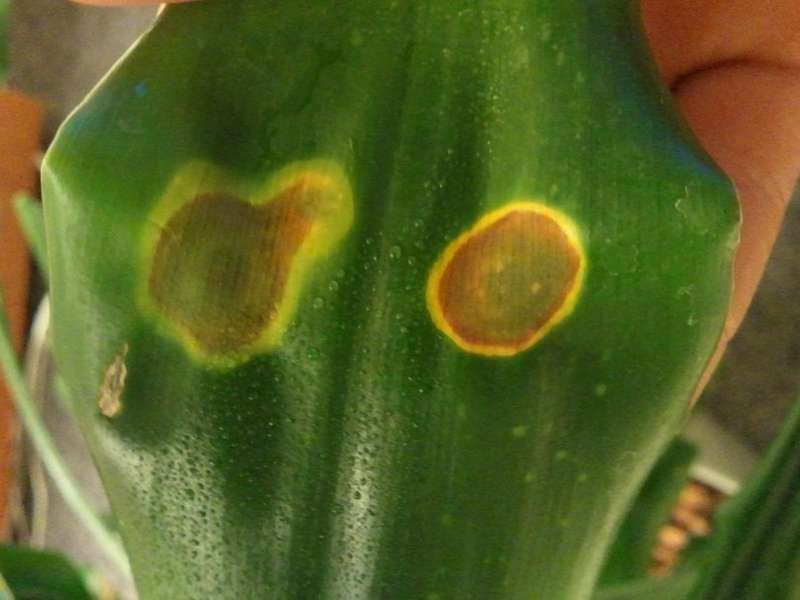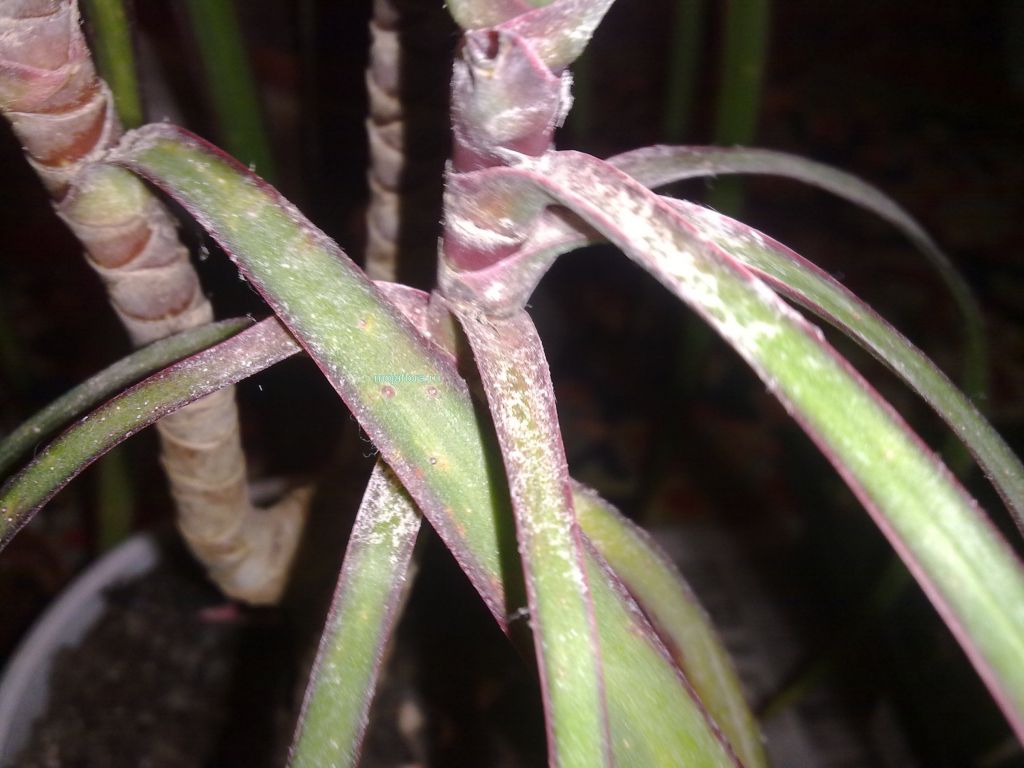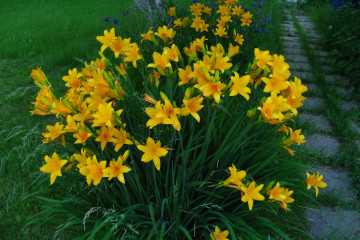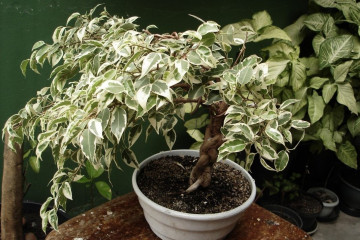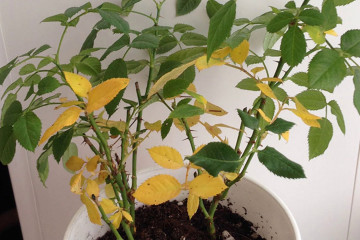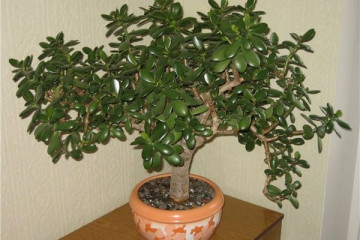Why do dracaena leaves turn yellow and fall off
Content:
Dracaena is considered one of the most popular indoor palms among flower growers. It is decorative, beautiful, suitable for any interior and quite unpretentious. It is often found that the leaves of the plant begin to turn yellow and fall off. You need to know how to deal with this, and not allow this. If the tips of the leaves dry on the dracaena, this article will tell the florist what to do.
Dracaena-marginate should be regularly looked after, while the plant does not require daily efforts, it is enough to pay attention to it once a week, follow simple rules and control the conditions of stay in the apartment. To understand why dracaena leaves dry and turn yellow, it is enough to look closely at the plant.
Improper care and poor microclimate can cause yellowing and leaf fall. Also, the leaves can fall off from age, when the plant is old enough, this process is natural. In the room, you should observe the required level of humidity, air temperature, and also regularly fertilize the dracaena.
It is important to control the health of the plant, pests and diseases can greatly spoil its appearance, and other green inhabitants of the room can also be infected from it. To prevent this from happening, you need to regularly inspect the plant (each leaf), observe the abundance of watering and the amount of useful trace elements in the soil.
How to water dracaena at home
For dracaena, both excessive watering and lack of moisture are harmful. Therefore, you should be careful about the regularity of watering and soil moisture. Leaves can turn yellow from excess moisture. In the case when water has stagnated in the pot for a long time, even the trunk may begin to rot.
Insufficient moisture will also lead to leaf fall, yellowing and wilting. Dracaena should be watered after the clod of earth has completely dried out, and you should not delay watering. Knowing why dracaena leaves dry, you can easily avoid trouble.
Why do dracaena leaves turn yellow and fall
So why do dracaena leaves turn yellow?
Non-compliance with temperature and humidity standards
Dracaena is very fond of spraying, this helps to increase air humidity and protect the plant from drying out the tips of the foliage. This problem is especially common in autumn and winter, when the heating is turned on and the air in the apartments becomes rather dry. To solve this problem, you should use a humidifier or spray dracaena from a spray bottle.
There are several varieties of dracaena that are popular, most of them cannot stand direct sunlight, they can burn greens. The first sign of a lot of sun will be foliage fading, they will become faded and dull. Most often this problem occurs in the summer, it is enough to rearrange the plant in the shade or remove it from direct sunlight.
The optimum growing temperature for this palm is from 180 ° C to 250 ° C. When the air temperature drops below 16 degrees, the plant may get sick, its condition will worsen, as well as its appearance, foliage may drop. Cold drafts are especially dangerous in winter.
Insufficient plant nutrition
If the dracaena lacks nutrients, even green leaves may crumble. For feeding, special fertilizers for palms are used. You should carefully read the instructions for use that comes with the product.
The soil should be nutritious, water and air permeable. Over-saturation of the soil with fluorine will make the ends of the dracaena leaves turn yellow. Then the treatment can be prolonged.
Why do spots appear on the leaves?
The appearance of any spots on the greenery of the dracaena indicates that the plant does not feel well, therefore you should immediately identify the cause of their appearance and take action. The spots can be of different colors and sizes, each of them speaks of certain problems of the plant.
Direct sunlight
You can understand that the plant has received a sunburn by the yellow spots on the leaves, the fading of greenery. When the first spots are found, you should immediately rearrange the dracaena to another place, provide diffused sunlight or partial shade.
Defeat by diseases
Spots on dracaena leaves can appear in various diseases of dracaena, among the most common:
- Alternaria - brown spots with a light center;
- phyllocytosis - light brown spots with a greenish edging that can turn black over time;
- heterosporia - elongated brown spots, in which the edging turns red.
All of these diseases can be treated with a fungicide, which is sold in specialized stores. Pests can also infect the plant, among the most dangerous and common:
- spider mite - yellow spots;
- thrips - brown spots with a gray tint;
- scale - falling leaves and white bloom;
- mealybug - cotton wool on green parts;
- aphids - damage to greenery starts from the top of the plant.
If a disease or pest is found on a plant, you should purchase special products in the store and immediately process the leaves and soil. Numerous preparations and proper care will help to revive the plant in time. After that, the flower will grow well and for a long time.
Dracaena location in a draft
Drafts, cold air, or sudden changes in temperature will cause the dracaena to develop brown spots. It should be checked whether a draft appears at the location of the dracaena during the ventilation of the room.
If the plant is frozen, then washing with warm clean water will help in this case, as well as moving to a room with air of the desired temperature. A flower can also shed leaves in a draft.
Why dracaena dries after transplant
In winter, the dracaena has a dormant period, because feeding and transplanting is done in spring. Sometimes it happens that after transplanting the plant cannot get into shape in any way. Leaves can dry out and wither, spots appear not only at the tips, but also along the entire length of the greenery. There are several explanations for this condition; you should carefully examine the plant and take measures to improve it.
How to save dracaena
Dracaena's poor health after transplantation, as a rule, comes from poor and low-quality soil. You should buy only soil for palm trees from trusted manufacturers to avoid contamination of the root system and the entire plant as a whole.It is also better not to immediately change the location of the dracaena, let it stand at the same place as before.
Watering should be done the same as before transplanting, you should not water the plant more or less than before. At the same time, it is necessary to continue to monitor the state of the earthen coma and water the dragon tree in a timely manner.
If dracaena is transplanted into poor soil (heavy, not suitable for growing palm trees), then fertilizer should be purchased that will revitalize the plant and help it take root in a new place.
How to feed dracaena
For the dragon tree, the most important components are phosphorus, nitrogen and potassium. Their presence in the fertilizer is mandatory; nevertheless, it is also necessary to control the amount of substances in the soil. They will ensure the active growth of greenery, roots, and also help to better resist possible diseases, strengthening the plant's immunity.
In addition, a small amount of such trace elements should be present in the fertilizer:
- manganese;
- copper;
- zinc;
- cobalt;
- molybdenum and others.
All these substances are necessary for dracaena in the summer, in an amount that meets the requirements of the plant. It is best to purchase ready-made preparations, which are presented in large quantities in specialized stores.
If brown spots, brown or red, appear on the leaves, then this may mean excess phosphorus. Large amounts of potassium will cause the lower leaves to die, dry out, and weaken the plant and increase the possibility of disease or pest attacks.
If young shoots are thin and pale, and also began to curl, then this most likely indicates an excess of calcium. With a large amount of boron, the crown of the dracaena can dry out, and its development will stop. When the trunk of a dragon tree becomes lighter, it indicates excess iron, sulfur or magnesium.
Thus, for feeding dracaena, ready-made mineral fertilizers and fertilizers created specifically for palm trees, decorative deciduous plants, ficuses and succulents are most suitable. Pay attention to the fluorine content, it should not be too high.
Dracaena comes out in the spring in the active phase of growth, it must be fed regularly. In this case, the frequency should be at least twice a week. In winter, feeding is either reduced to 1 time per month, or stopped altogether. It depends on the room temperature, the lower it is, the less nutrients the plant needs.
Dracaena, or dragon tree, is unpretentious in cultivation, but, like any living creature, it requires care and attention. Regular monitoring of the condition of the plant will help you avoid trouble and grow a beautiful palm tree in your apartment.
